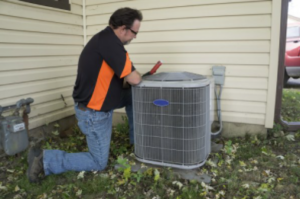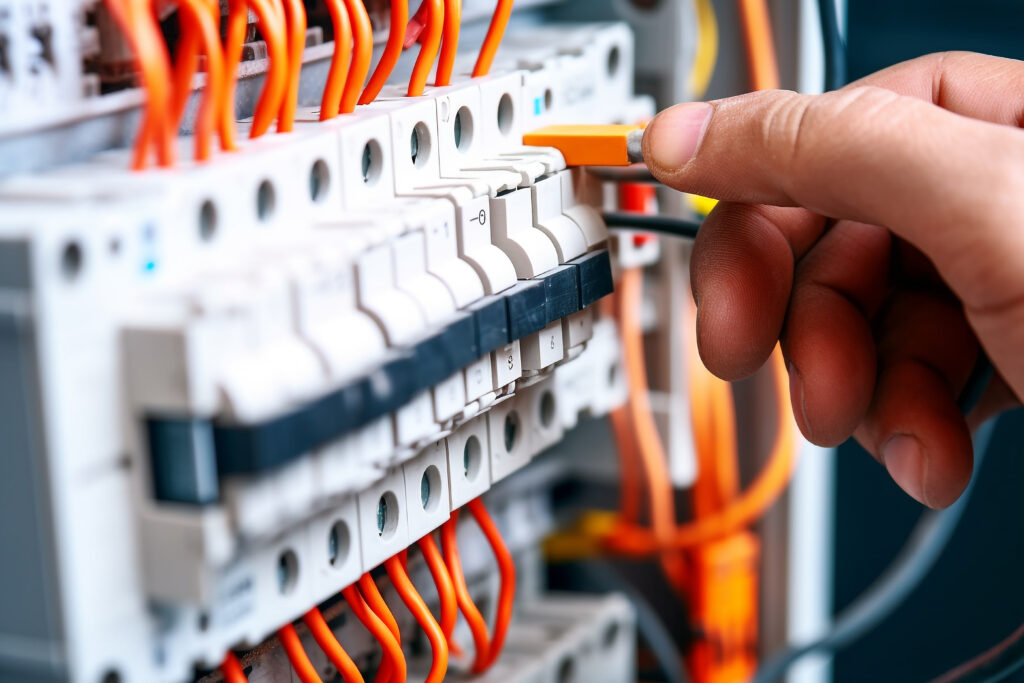
After tiring business hours, following a long day at work, your home air conditioner isn’t operating as expected. The drain pan is full of water, as you discover upon closer inspection. What next?
It’s a sign of danger if you see water in your drain pan. There are a few things that could be causing this difficulty. It would be best if you swing into action as soon as possible. Call a pro right away so they can get your system back to normal quickly as possible.
What is an AC Drain Pan?
When a drainpipe gets clogged, water collects in the air conditioner’s drain pan. You may avoid water damage by using this drainpipe to collect condensation from your air conditioner. If you see water in the drain pan of your air conditioner, this could indicate a leak or a blockage in the air conditioner.
When the AC drain pan is overflowing, it means you have a problem with your air conditioner. But worry not, clogged drainpipes are pervasive, and they are easy to fix.
Reasons your Drain Pan Might Fill with Water
When you realize that the drain pan of your air conditioner is full of water, this is never the time to sit back and relax. Your water-filled drain pan is an indication that your air conditioner needs repair. You may not be able to perform a simple DIY if you’re not experienced. Expect Dangers of an AC Drain Pan Full of Water Look out for :
A clogged drainpipe
Algae and mold thrive in humid environments like refrigerant coils and pipes, leading to drainpipe blockages over time. Systems with blocked drainpipes are more likely to have major mechanical problems. The first indicator of this is a drain pan overflowing with water.
Obstruction in the sewer pipe
A clogged drainpipe often causes standing water in the drain pan. Your air conditioner’s evaporator coils chill and dehumidify the air as it flows over them—condensation forms on the waves due to the residual humidity. There is a drain pipe that leads to a collection tank, where the condensation occurs.
Evaporator coils may accumulate debris
Dust and debris are also left behind by the air that sweeps over these coils. Drain line clogs are often caused by dirt that has been allowed to drop into the water. Even though this is a simple issue, it is better to have an expert handle the AC repair to do the job correctly, with no other problems arising.
Frost Has Formed on the Evaporator Coil
Dripping water from a frozen evaporator coil will create moisture stains in your drain pan. If your refrigerant levels are low, the evaporator coil is more likely to freeze.
Low refrigerant levels often indicate a refrigerant leak somewhere in the system, so keep an eye out for these. There are leaks in your system, and our professionals can find them and fix them for you.
Wrong Installation/Setup
The drain pan might be angled incorrectly if your air conditioner was not correctly installed. Novices or DIYers may overlook critical yet straightforward alignment. The drain’s exit should be on the bottom of the pan so that water flows toward it. Collect water before adequately discharged if the drain is on the other side of the pan from the door.
Stable Support
Stable supports underneath the drain pan are also required to hold the pan and support the bottom. The pan could sag if these aren’t used, allowing water to accumulate. Our professionals can examine your installation to ensure that it’s correctly installed for effectiveness. Assuming that the problem with the water in your drain pan is due to an installation issue, we’ll happily make the required adjustments to your air conditioner to get the water to flow quickly and correctly once again.
How to Unclog the Drainpipe
A clogged drain pipe is the most typical cause of an overflowing drain pan on an air conditioner. Algae, mold, and other microorganisms thrive in the refrigerant coils and pipelines. Water might build up in the drainpipe due to algae and mold growth over time. Even though unclogging a drainpipe is relatively simple, waiting too long to do so could be a more serious mechanical issue.
How to Clear a Blocked Drain
It’s not difficult to unclog a drainpipe. Turn off your air conditioner’s power first. Once the air conditioner has been turned off, check the drain line for leaks, cracks, or other issues.
If a problem is discovered, replace the drain line and any other damaged components. After the parts have been replaced, use a wet-dry vacuum to remove any water accumulated in the drain pan.
Then unclog after you’ve removed the water and any leftover residue. Remove the drainpipe’s PVC top and use a wire brush to remove the obstruction. Once the clog has been cleared, flush the pipe with bleach to eliminate any algae or mold that may have accumulated. Proceed to check your air conditioner after replacing the PVC top.
How to Prevent Water in AC Drain Pan
Remove the water from the drain pan after making sure there aren’t any problems. The most straightforward method is a wet/dry shop vac, which you can pick up at your local store. Please remove all of the water with a vacuum cleaner and then dispose of it properly.
Finally, clean out the drain of any sludge or debris. Check for obstacles at the drain’s outdoor terminus. Mulch, pine straw, and other debris might clog the drain outlet.
Coastal Home Services
Maintaining a regular drain pan will help keep it empty. Do not let water stand around your air conditioner for extended periods. If you need any assistance, Coastal Home Services in Morehead City, NC offer efficient AC troubleshooting to assist you in addressing the problem if water accumulates in your air conditioner’s drain pan. If you have any questions about our services, please contact us via the form below. We will get back to you as soon as possible.


